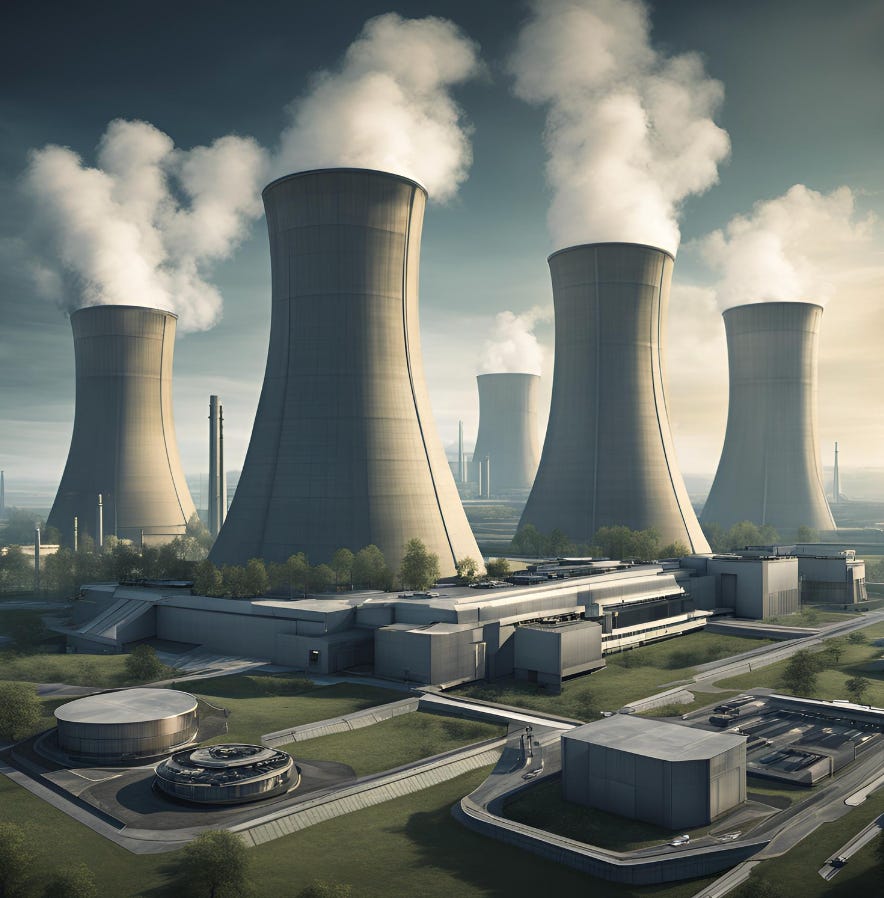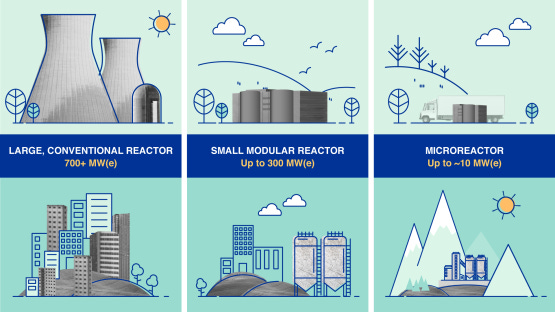This week, Meta announced an RFP inviting nuclear energy developers that can provide nuclear reactors to support electricity demand from the tech company's data centers and artificial intelligence (AI) efforts. This follows its announcement of a $10 billion investment to build Meta’s largest-ever data center powered by natural gas by partnering with Entergy.
Tech companies have been looking at nuclear power as a source to meet their growing energy needs. Microsoft signed a deal to restart the Three Mile Island nuclear plant back in Sep, AWS announced plans to invest more than $500 million to develop small module reactors, and Google signed an agreement to purchase energy from Kairos Power’s small module reactors for its AI data centres.
Why Nuclear
On paper, nuclear energy seems like a no-brainer to meet the world’s ever-growing energy needs while combating climate change.
It is a clean energy source that does not release any carbon.
It is more stable and resilient than renewable energy sources such as wind and solar, as nuclear plants can be kept on 24/7 without being dependent on weather conditions.
It is more efficient and cost-effective per unit of energy generated. One large nuclear power plant can replace multiple coal-fired power plants to provide the same level of energy. Compared to other sources of energy, nuclear uses fewer materials and takes up less land.
Yet historically, nuclear energy doesn’t have the best of reputation and it’s easy to see why. Chernobyl and Fukushima comes to mind as the two major nuclear accidents that have defined public perception towards nuclear. The explosions and resulting release of radioactive material have largely branded nuclear as dangerous. A year ago, Germany famously took its last 3 nuclear power stations offline.
What Changed?
Private companies, led by the biggest tech companies mentioned earlier, are leading a transition towards exploring nuclear as a source. For them, it’s about finding the best energy mix that help them meet their carbon footprint responsibilities while also optimising their energy cost and scaling their energy production to meet their electrical consumption. Their growing investments in AI, supercomputers and data centres have only added to this needs. These companies have the budget to invest in the development of this technology, paired with the operating intensity to hold their nuclear developer partners to build and execute.
Countries have also acknowledged the importance of exploring nuclear as a strategic energy source. In July this year, President Biden signed the ADVANCE act into law, which aims to incentivise and support the development and deployment of new advanced nuclear technologies. Singapore inked a deal with the U.S to study nuclear technology, and multiple other countries in Southeast Asia followed suit in confirming their interests in further studies on nuclear energy.
With the right regulatory environment and funding of corporate incentives, clear commercial and environmental benefits, actual development of new nuclear technology designs and improving public perception, the stars could finally align for nuclear energy to play a greater role.
Going Small vs Large
Small Module Reactors (SMRs) have gotten more attention in recent times. These are advanced nuclear reactors that have a power capacity of up to one-third of the generating capacity of traditional nuclear power reactors. The benefits of SMRs stems from the nature of their design – small and modular
Small: Prefabricated units of SMRs can be manufactured in factories before being installed on site, compared to large reactors which are often one-off custom designs for a particular location, resulting in longer construction times.
Modular: These can be deployed incrementally to match increasing energy demand in the future, enabling the possibility of smaller power plants with lower initial construction costs and investments needed.
Given how long it takes and expensive it is to build large reactors, you can see the appeal of financing multiple smaller projects instead. While SMRs in principle would be more expensive per unit of power than large reactors, they are easier to finance with lower upfront costs and shorter build times. This enables you to build multiple rounds of smaller reactors, with the commercialisation of each set of reactors help to fund for the next round, and thus providing more manageable financing.
SMRs remains a technology under development. According to the International Atomic Energy Agency (IAEA), more than 80 commercial SMR designs are being developed around the world to target various applications. As of 2024, only China and Russia have successfully built operational SMRs.
If you’re keen to invest in this space, some of companies that are public include SMR 0.00%↑ and $OKLO. Note that these are all pre-revenue companies that are high-risk investment opportunities!
-
This Week:
👥: OpenAI reported a new milestone of 300 million weekly active users. The company is targeting to reach 1 billion active users over the next year, as it competes with the likes of Anthropic and xAI, which is viewed as a “fierce competitor”.
🤖: xAI raised $6 billion in its latest equity funding round, which reportedly values the firm at > $40 billion. Part of the money raised will likely go towards funding the company’s plans to expand its supercomputer Colossus to house at least 1 million GPUs. This will make it one of the world’s largest supercomputing systems , if not the largest (El Capitan, currently the world’s most powerful supercomputer, houses < 100K AMD GPUs). However, this move will likely raise environmental concerns due to the significant infrastructure and resources required.
🏍️: Delivery Hero’s Spain unit Glovo will hire freelance riders as full-time employees, a change in its employment model as the company seeks to avoid further legal uncertainties. Spain’s Rider Law, introduced in 2021, presumes gig-economy couriers should be employed rather than self-employed. This move is expected to cost a 100 million hit to Glovo’s earnings by 2025, as the self-employed courier model looks set to be a thing of the past in Spain.
🇰🇷: South Korea’s president Yoon declared martial law and lifted it a few hours later, amidst political uncertainty in the country.





Nice work on this!